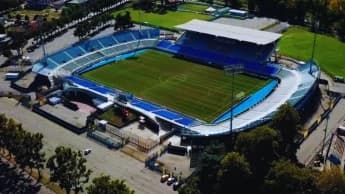
Where Legends Are Made: Exploring the Legacy of Rio’s Iconic Maracana Stadium
Maracana Stadium: A Monument to Football and Brazilian Identity
Nestled in the vibrant heart of Rio de Janeiro, Maracanã Stadium stands as a towering symbol of Brazil’s deep love for football and its rich cultural heritage. Since its inauguration in 1950 for the FIFA World Cup, Maracanã has become more than just a sports venue—it is a living testament to Brazil’s passion, pride, and resilience. Officially named Estádio Jornalista Mário Filho, after the journalist who championed its construction, the stadium is universally known as "Maracanã," a name that evokes the electric energy of Brazilian football.
With a seating capacity that once exceeded 200,000 and now accommodates 78,838, Maracanã has hosted some of the most iconic moments in sports history. From the heartbreak of the 1950 World Cup final, known as the Maracanazo, to the glory of Brazil’s 2014 World Cup campaign, the stadium has been a stage for both triumph and tragedy. It has welcomed legendary players like Pelé, Zico, and Romário and continues to be a hub for football, concerts, and cultural events.
A Cultural Icon Beyond Football
Maracanã’s significance extends far beyond football. It is a cultural landmark that has hosted global superstars like Paul McCartney, The Rolling Stones, and Beyoncé, as well as the opening and closing ceremonies of the 2016 Rio Olympics. The stadium’s versatility and enduring legacy make it a symbol of Brazil’s ability to unite people through sport, music, and celebration.
Architectural Grandeur and Modernization
Designed by the legendary architect Oscar Niemeyer, Maracanã’s sweeping curves and open bowl design reflect Brazil’s modernist vision. Over the years, the stadium has undergone significant renovations to meet modern standards, including the addition of a new roof, upgraded seating, and state-of-the-art technology. These updates have ensured that Maracanã remains a world-class venue while preserving its historic charm.
The Fan Experience: A Celebration of Passion
For Brazilian fans, Maracanã is more than a stadium—it is a sanctuary of passion and pride. On match days, the air crackles with energy as supporters of Rio’s rival clubs, Flamengo and Fluminense, fill the stands with chants, songs, and vibrant displays of color. The Fla-Flu derby, one of football’s most intense rivalries, is a highlight of the stadium’s calendar, showcasing the deep connection between the sport and Brazilian culture.
Visiting Maracanã: A Must-See Destination
For visitors, Maracanã offers guided tours that provide a behind-the-scenes look at its history and architecture. From the locker rooms to the pitch-side views, the tour immerses you in the stadium’s storied past. Nearby cultural attractions, such as the Museu do Futebol and Rio’s iconic beaches, make Maracanã a cornerstone of any trip to Rio de Janeiro.
A Legacy of Resilience and Pride
Maracanã’s enduring legacy is not just written in the history of football but also in the hearts of millions who revere it as a symbol of Brazilian identity. It is a place where dreams are realized, legends are born, and the spirit of a nation comes alive. Whether you’re a football fan, a history enthusiast, or a cultural explorer, Maracanã Stadium is a destination that captures the essence of Brazil’s passion and pride.





